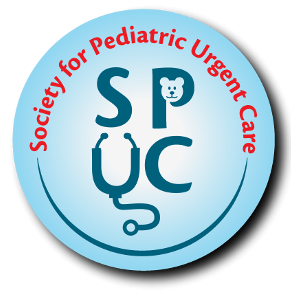BASICS
DESCRIPTION
- Ongoing generalized tonic clonic seizures > 5 minutes; or
- Recurrent seizures without recovery of mental status in between; or
- 3 or more seizures within one hour.
EPIDEMIOLOGY
Incidence
- 120-180,000 cases per year in U.S.
- 4-8 children per 1,000 will experience SE before age 15
RISK FACTORS
- Epilepsy
- Fever
- Developmental delay
GENERAL PREVENTION
- Antiepileptic medications
PATHOPHYSIOLOGY
- Metabolic demands increase approximately 7-fold
- Ongoing seizures rapidly modify neuronal activity and synaptic function
- Discrete intermittent seizures merge to become continuous
- This leads to, neuronal injury and reduced responsiveness to benzodiazepines
ETIOLOGY
- Fever
- Epilepsy
- Noncompliance with antiepileptic medications
- Metabolic (glucose, sodium)
- Idiopathic
COMMONLY ASSOCIATED CONDITIONS
- Benign viral infections causing fever
- Low levels of antiepileptic medications
- Hypoglycemia
- Hyponatremia
- Non-accidental trauma
DIAGNOSIS
HISTORY
- Duration
- Medications given prior to arrival
- Home meds
- EMS
- Recent vomiting or diarrhea
- Improper preparation of infant formula
- Ingestions
PHYSICAL EXAM
- ABCs
DIAGNOSTIC TESTS & INTERPRETATION
Lab
Initial Lab Tests: Bedside STAT glucose and sodium
- Electrolytes if patient has had vomiting or diarrhea
- Calcium and phosphorus in the young infant
Imaging
- CT/MRI brain if first time or if focal neurologic exam or if patient not recovering mental status
- CT if suspected trauma
Diagnostic Procedures / Other
- Other workup for coma if patient does not improve (tox screen, CT of brain, workup for nonaccidental trauma)
DIFFERENTIAL DIAGNOSIS
- Pseudoseizures (usually in adolescents)
TREATMENT
MEDICATION
First Line
- Benzodiazepines
- Midazolam 0.2 mg/kg IM, 0.1 mg/kg IV/IO
- Diazepam 0.5 mg/kg PR, 0.2 mg/kg IV/IO
- Lorazepam 0.1 mg/kg IV/IO
- Repeat in 5 minutes if still seizing
Second Line
- Fos-phenytoin 20 mg/kg of phenytoin-equivalent IV over 10 minutes; or
- Levetiracetam 20-60 mg/kg IV over 10 minutes; or
- Valproate 40 mg/kg IV over 10 minutes; or
- Phenobarbital 20 mg/kg IV over 10 minutes
COMPLEMENTARY & ALTERNATIVE THERAPIES
- Treat fever
- Treat hypoglycemia or hyponatremia
- Pyridoxine for infants
DISPOSITION
Admission Criteria
- Children with status are generally admitted for monitoring for recurrence
- Critical care admission criteria
- Loss of airway
- Not recovering mental status
- Intracranial hemorrhage
- Intoxications
REFERENCES
- Silbergleit, R., Durkalski, V., Lowenstein, D., Conwit, R., Pancioli, A., Palesch, Y., & Barsan, W. 2012. Intramuscular versus intravenous therapy for prehospital status epilepticus. N.Engl.J.Med., 366, (7) 591-600 available from: PM:22335736
- Lowenstein, D.H. & Alldredge, B.K. 1998. Current Contcepts-Status epilepticus. New England Journal of Medicine, 338, (14) 970-976
- Lowenstein, D.H., Bleck, T., & Macdonald, R.L. 1999. It’s time to revise the definition of status epilepticus. Epilepsia, 40, (1) 120-122
ADDITIONAL READING
- Alldredge, B.K., Gelb, A.M., Isaacs, S.M., Corry, M.D., Allen, F., Ulrich, S., Gottwald, M.D., O’Neil, N., Neuhaus, J.M., Segal, M.R., & Lowenstein, D.H. 2001. A comparison of lorazepam, diazepam, and placebo for the treatment of out-of-hospital status epilepticus. N.Engl.J.Med., 345, (9) 631-637 available from: PM:11547716
- Cock, H.R. 2011. Established status epilepticus treatment trial (ESETT). Epilepsia, 52 Suppl 8, 50-52 available from: PM:21967363
- Chamberlain JM, Okada P, Holsti M, Mahajan P, Brown KM, Vance C, Gonzalez V, Lichenstein R, Stanley R, Brousseau DC, Grubenhoff J, Zemek R, Johnson DW, Clemon TE, Baren J for the Pediatric Emergency Care Applied Research Network (PECARN). Lorazepam versus diazepam for pediatric status epilepticus: A randomized clinical trial. JAMA 2014; 311(16):1652-1660.
PEARLS AND PITFALLS
- Convulsive status epilepticus is a true medical emergency. Time = neurons. Use an established protocol with clear timeframes for escalating therapy.
- Don’t forget glucose and sodium in children.
- Consider non-accidental trauma.
